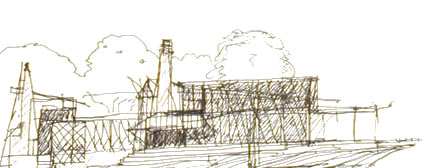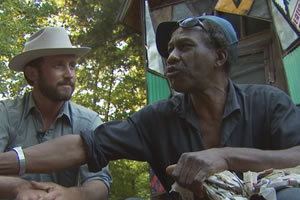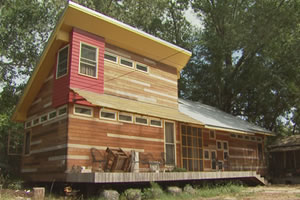History and Philosophy
“As an artist or an architect, I have the opportunity to address wrongs and try to correct them,” Mockbee once said.
In 1992, Mockbee was hired as a professor within Auburn University’s School of Architecture. Viewing the opportunity as his chance to make a difference in a community and work with younger generations, he co-founded the Rural Studio with longtime friend and colleague D.K. Ruth. “The main purpose of the Rural Studio is to enable each student to step across the threshold of misconceived opinions and to design/build with a ’moral sense’ of service to a community. It is my hope that the experience will help the student of architecture to be more sensitive to the power and promise of what they do, to be more concerned with the good effects of architecture than with ’good intentions.”
In 1994, after landing a $250,000 grant from the Alabama Power Foundation, the studio designed and constructed its first house, in Mason’s Bend, for Shepherd and Alberta Bryant. The couple “had been living with their three grandchildren in an unheated shack without plumbing,” according to the Encyclopedia of Alabama.
The house’s most unique feature: donated hay bales for walls.
Using donated, recycled or reused items became a trademark of Rural Studio — 72,000 surplus carpet tiles were used in another house; worn-out tires were reused for the walls of a chapel; Chevy Caprice windshields were used for a roof.
To date, Rural Studio has constructed more than 80 homes and civic buildings in Hale County. But the structures Mockbee and his students created relied first on “spiritual comfort” — Mockbee wanted those who used them to feel a difference in their lives.
“An architect can help us discover what is noble and help create the opportunity for people to realize their innate nobility.”
Since Mockbee’s death, Rural Studio has stayed true to Mockbee’s original vision while expanding the scope of its work. Now led by Andrew Freear, students still interact, communicate and collaborate with their clients. Building costs are still kept to a minimum using salvaged or recycled building materials. But project designs have become larger scale and have segued from single-family homes to community structures — parks, firehouses, churches, etc.


